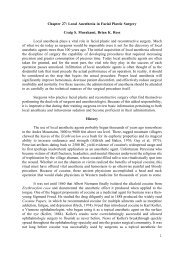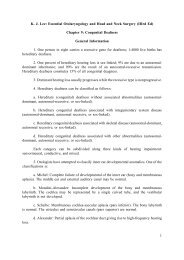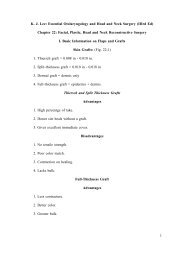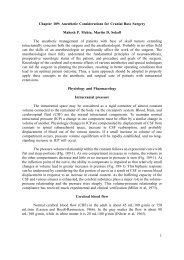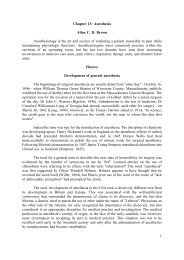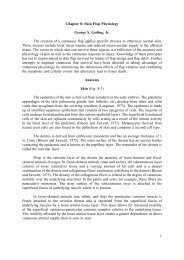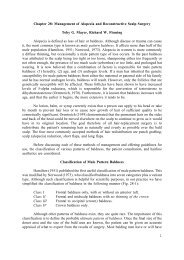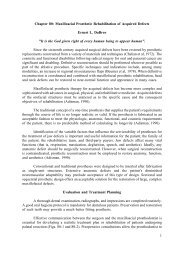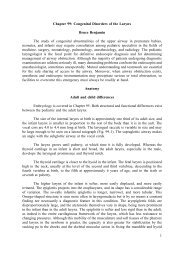You also want an ePaper? Increase the reach of your titles
YUMPU automatically turns print PDFs into web optimized ePapers that Google loves.
necessary. The ends are then sutured, remembering to avoid tension. If undue tension ispresent, a graft should be considered. Graft if gap is greater than 2 cm. Techniques ofvascular surgery should be employed at all times. Repaired vessels should always be coveredwith soft tissue like muscles or skin.Where vascular injury is associated with a fracture or a disrupted joint, it is generallyaccepted to stabilize the disruption first. Vascular surgery is delicate and often takes long.What a waste to spend many hours repairing a vessel, only to have the suture line dismantledby an unstable fracture!JointsPenetrating injuries to joints may appear innocuous at first. Left alone, the result isoften disastrous. For this reason and the fact that open synovial membranes lead to sepsis andadhesions, injured joints should be debrided. The joint is exposed widely and excision of alldevitalized tissue is done.All loose and foreign bodies are removed. Osteochondral fractures are repaired andfixed appropriately. These procedures are preceded by meticulous washing and irrigation asdescribed above.Before skin closure tha capsule and synovial membrane are meticulously closed toprevent leakage of synovial fluid. This will result in fistula formation. If the capsule isdeficient and difficult to close, a fascial graft/patch can be done. Prophylactic antibiotic is anadjunct treatment.Besides trauma, joints have been debrided for osteoarthritis, degeneration anddegeneration following repeated haemorrhage (haemophilia).Routine arthrotomy is done. All debris is removed. This includes degeneratedsynovium, cartilage, bone and in joints like the knee, menisci may be removed too. Washingis done, haemostasis effected. The large raw area may make conventional haemostatic controlimpossible. In these cases fibrin-seal technique may be employed.BowelBowel "excision", usually called resection, is done for blunt, open and sometimesvascular insult. Leaking bowel or dead gangrenous bowel usually ends in death if leftunattended. At laparotomy, the abdomen is washed of blood and soiling. The site is identified.Arcades are examined carefully before segments are removed.The remaining segment should receive a reasonable sized vessel which will not becompromised after dividing the mesentery. The anastomotic end should not be cleared ofmesentery for more than 0.5 cm.Mesentery should always be divided between clamps/ligatures. The remaining bowelis then either sutured in the routine way or exteriorized, as the case may be. If in doubt ofbowel viability the abdomen may be closed and re-exposed in 24 hours time.6




